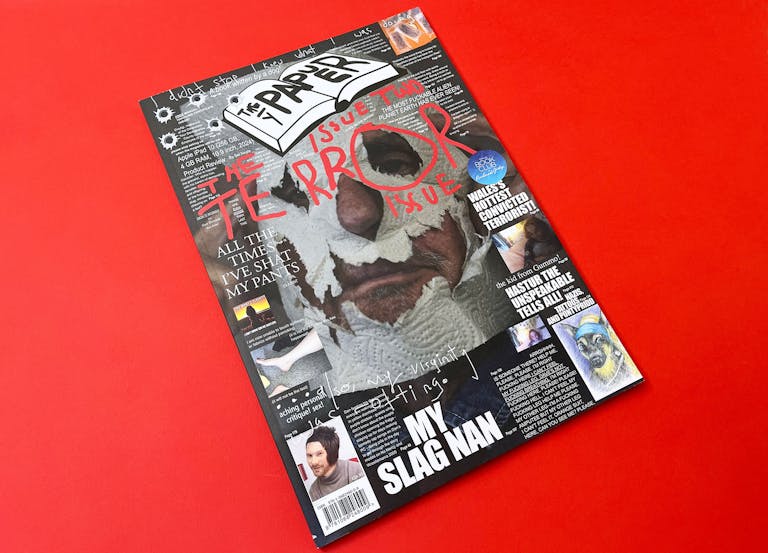Fashion magazine PETRIe is not afraid to challenge its readers
It is easy to reduce fashion magazines as frivolous, but independent titles like Vestoj and Tank are proof that they’re anything but. Addressing issues to do with poverty, human rights violations and racism head on, PETRIe is a fashion and photography magazine that knows its purpose.
With a hard cover and large, elegantly designed pages, it reads like an academic textbook that is confident in the intellect of its readers. We speak to their team — founder and editor-in-chief Zadrian Smith, features director Elena Stanciu, and art and design director Katja Alissa Mueller — to find out why they’re championing serious journalism against the backdrop of fashion.

PETRIe combines thought-provoking journalism with fashion. Why did the founder want to make a magazine like this?
Zadrian Smith: I worked in the luxury sector of fashion magazines for five years and sat in countless creative meetings, where we discussed the most banal topics of what the journalism in the issue should cover. It became a perennial journalistic list of features on society girls, favourite Pantones and patterns of the season and the scoop on who was at the latest social fete being thrown across the globe.

I feel there is this unspoken rule that frivolous fashion cannot sit alongside serious journalism covering human issues that impact society on a daily basis, such as overlooked poverty, underemployment and disillusionment of younger generations, human rights violations, or racism and sexism that are at risk of becoming the norm. With PETRIe, I wanted to create beautiful, thought-provoking and arresting imagery that balances out words that may not always be the easiest to read, because of the topics and perspectives that challenge the established norm. I felt very inspired by what now-retired Graydon Carter had done at Vanity Fair, but wanted to do this on a much larger scale that wasn’t so focused on America, and looked at us as a global human race.

Race and identity are prominent themes in the magazine — tell us more about the topics PETRIe likes to explore.
Zadrian: Every year, when we sit down to decide what topic our print publication will explore, we spend time really assessing what is currently happening in society that needs to be addressed without bias. As our team is so diverse and our contributors come from across the globe, we are always met with a plethora of topics, but they always feel very personal because they are directly connected to someone’s experience in our community. I find that the topics we cover usually centre around issues that are being faced by those underrepresented in society, or, as Ray Petri himself would say, “the underbelly of society.”
Elena Stanciu: With every digital theme and print issue, we focus on topics that are both very current, and somehow timeless. We aim to tackle the sort of issues that impact society and produce ripples: questions of social justice and equality, matters of language and discourse, gender, visibility and surveillance, the digital realm with its many ramifications, notions of heritage and legacy, the construction and representation of space, the role of art and creativity today. We approach all these in a manner that seeks to illuminate the condition of the present-day individual beyond inherited social and cultural hierarchies, to celebrate beauty, in an inclusive and non-normative understanding of the concept, and to challenge bias and prejudice.

PETRIe is a beautifully bound, hardcover magazine, a physically pleasurable thing to read. Can you tell us about the thinking behind making a publication in this format?
Katja Alissa Mueller: Amidst the fast-paced stream of information and the visual overload we as society are confronted with on a daily basis, PETRIe is designed in a way that counteracts these tendencies. Everything — from the hardbound cover, the format, the use of two different paper stocks, the tailored layouts for each story, the time we put in to typeset all copy to facilitate the reader’s experience — is designed to last, and underlines the thinking against a throw-away culture.

It wouldn’t be adequate to represent the importance and magnitude of the content with a design that feeds the instant gratification hunger, but can’t communicate its essence: PETRIe gives voice to existing issues that need to be discussed and cannot be ignored or thrown away as you might do with a magazine that is cheaper to produce. We envisioned the issue as a piece of design that will live on your bookshelf or coffee table for years to come and serve as source of inspiration, as well as a mirror of society at a given time.

Tell us about the latest issue, ‘Not Your Savage’. What did the team want to explore and what are some features you’re particularly excited about?
Zadrian: The premise of the issue came from one important source: James Baldwin. I was inspired by the documentary I Am Not Your Negro. In the film, Baldwin notes that when he was living the ‘good life’ in Paris, he felt obligated to come back to his native Harlem and do whatever was in his power to help the very difficult plight of the negro at that time.
‘Ain’t No Beauty in Savannah,’ one of the key feature editorials of the issue is a personal homage to my family and hometown. Placing my sister Alandria (below), who is mentally disabled, on the cover in Dior encapsulates exactly what we stand for at PETRIe, and conveys to our readers that we must not allow society to place us into stereotypical boxes, and that we should always strive to remove labels, and replace them with a healthy, unadulterated way of seeing the world, ourselves, and each other.

Elena Stanciu: In ‘Not Your Savage’, we follow the larger vision we have for PETRIe: to break silences, speak against violence, call out cultural and social aggressions, and challenge sites of privilege and normativity, which limit life and creativity. I would describe the ethos of the issue with a sentence we often come back to: we seek to glamorise the marginal.
I will have to choose two features I´m truly excited about – one is Astrid Scheuermann´s story on indigenous groups in Latin America and their constant struggle to be acknowledged and respected (below). The other is Johnny Harboe´s article on gender relations in the world of metal, in which he looks at the power dynamics at play through a theoretical lens. These two are very different in topic, but share a common thread with the rest of the features in the issue: they are critical, sharp, unapologetic, and, maybe most importantly, hopeful.



—
Subscribe to Stack and get our favourite independent magazines delivered to your door each month






